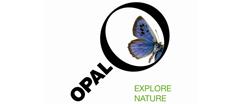Wolves - Foodchains
Age group: 7-9
Topic: Food chains
Title: Wolves
Author: Emily Gravett
Publisher: Macmillan
ISBN: 1-405-05362-3
Brief Synopsis: Rabbit borrows a book about wolves from the library. He can't put it down! Rabbit soon learns the truth about the sinister wolf - their sharp claws, bushy tails and 42 teeth! Rabbit soon learns about all the creatures that wolves may eat....a brilliantly funny book and a must read for all rabbits.
This book is a brilliant setting for :
- constructing and interpreting a variety of food chains,
- identifying producers, predators and prey
Amazon link: https://www.amazon.co.uk/d/Books/Wolves-Emily-Gravett/1405053623
Key scientific vocabulary: carnivore, herbivore, omnivore, producer, consumer, predator, prey, food chain,
Other fiction books with a similar theme:
Two Frogs – Chris Wormell
Tadpole’s Promise – Jeanne Willis & Tony Ross
The Rabbit Problem – Emily Gravett
Education Pack: Food Chains
A brilliantly practical resource from OPAL bringing food chains to life. Photocards illustrating parts of a food chain which can then be used to build food chains. In the story Wolves, Rabbit learns the grizzly truth about wolves. I am afraid that this resource is sure to bring rabbit even more bad news as this game looking at the predator - prey relationship is about rabbits and foxes.
Web of Wildlife (Age 7 to 11)
This resource illustrates the vocabulary associated with diet and each organism's position in the food chain. Children carry out activities in small groups to identify sort and construct food chains for five different habitats. These are British woodland, British coastal waters and the less familiar habitats of African savannah, Arctic tundra and Antarctic.
Dinner at the Reef: Food Chains (Age 7 to 11)
This interactive role play games helps students learn about food webs in a marine environment, predator‐prey relationships and the fine balance of an ecosystem. The game helps children to think about population and how it may be affected by external factors such as pollution.
The main character - rabbit may like to draw up a list of survival strategies incase of meeting a wolf in real life. You could challenge the children to help rabbit by creating a list of ideas, based on other species within the animal kingdom.
Save Our Bees
A great resource for considering bees and out interdependence on them within our food web. Published for British Science Week 2009 this resource is packed full of bee facts as well as ideas for role play and practical fieldwork - spotting bees and identifying their food sources.
Real Bugs
There are two resource packs here. The first supports a range of field work activities such as collecting minibeasts using pooters, umbrellas, pitfall traps and tullgren tunnels, detailing ways of making these devices using easily found materials. Resource pack two contains three play scripts which cover the areas of biodiversity, food chains and adaptations for diet.
Education Pack: Life in Ponds
An OPAL pond survey where children look closely at their local pond. Then report their data to a national study to help build up a wider picture of the UKs fauna and flora. Children do a pond dip to see which creatures they can see, test the water for PH and look for indicators of pond health.
The children are encouraged to identify Dragonflies and damselflies. These are the acrobats of the insect world and with their stunning colours are a true sign of summer. They are skillful hunters with excellent eyesight, flying at speeds of up to 22.5 mph (36 km/h). The species we see today are almost identical to their ancestors which flew over 300 million years ago. Unfortuately dragonflies and damselflies are endangered by habitat destruction and climate change. An easy way to tell the difference between damselflies and dragonflies is to look at their wings when the creature is at rest. Damselflies will hold their wings back over their bodies, whilst dragonflies hold theirs outstretched perpendicular to their bodies.
So it would be good for children to think what effects that would have on the pond ecosystem.



